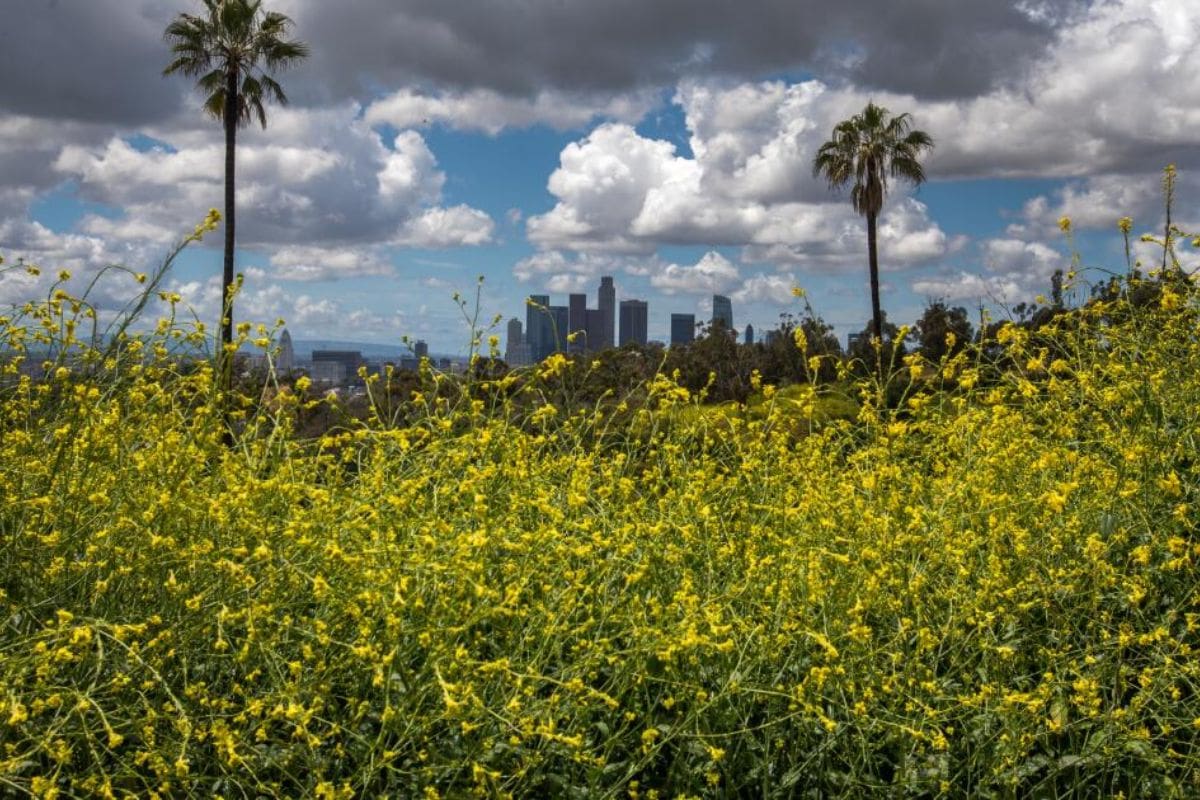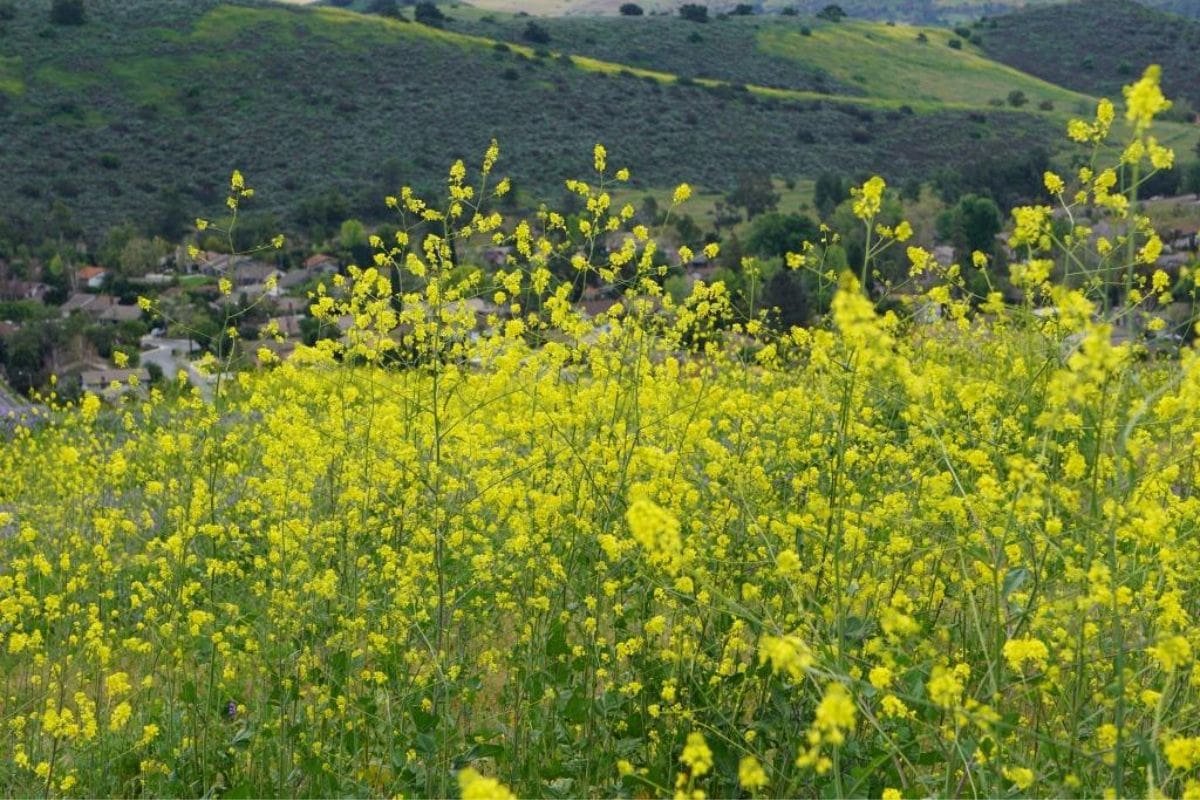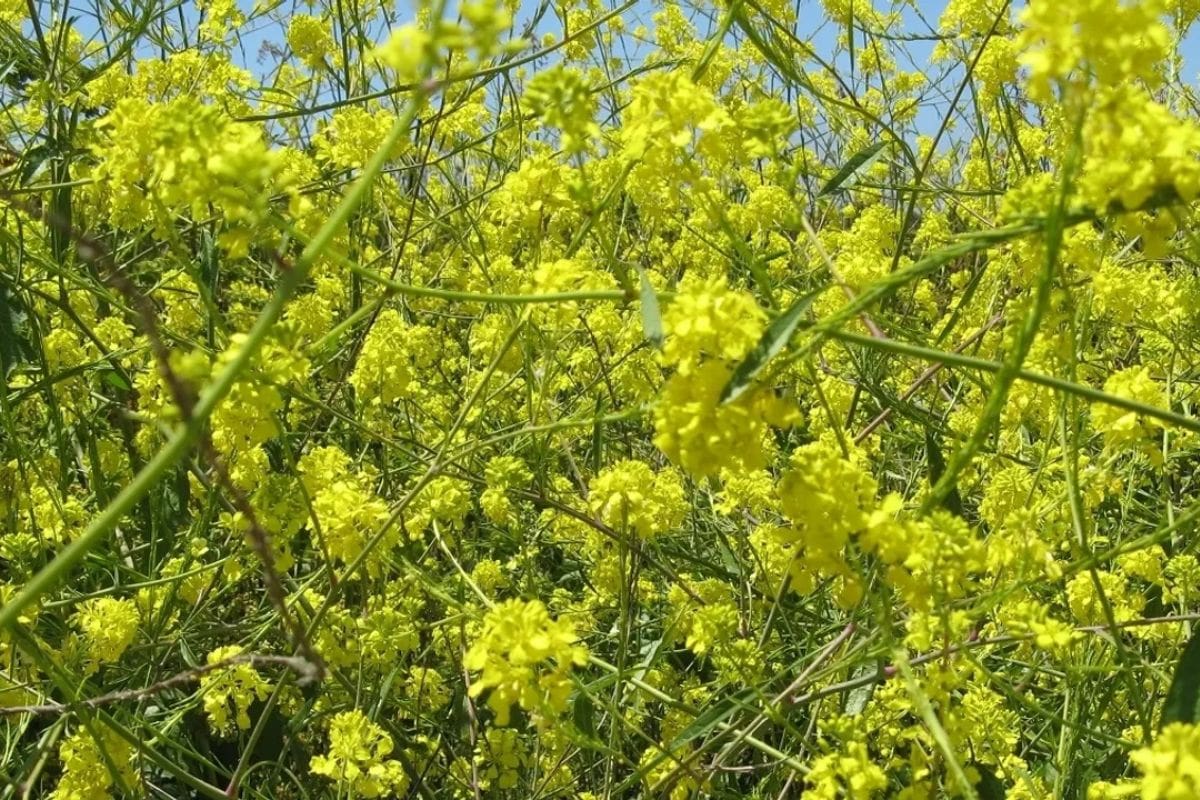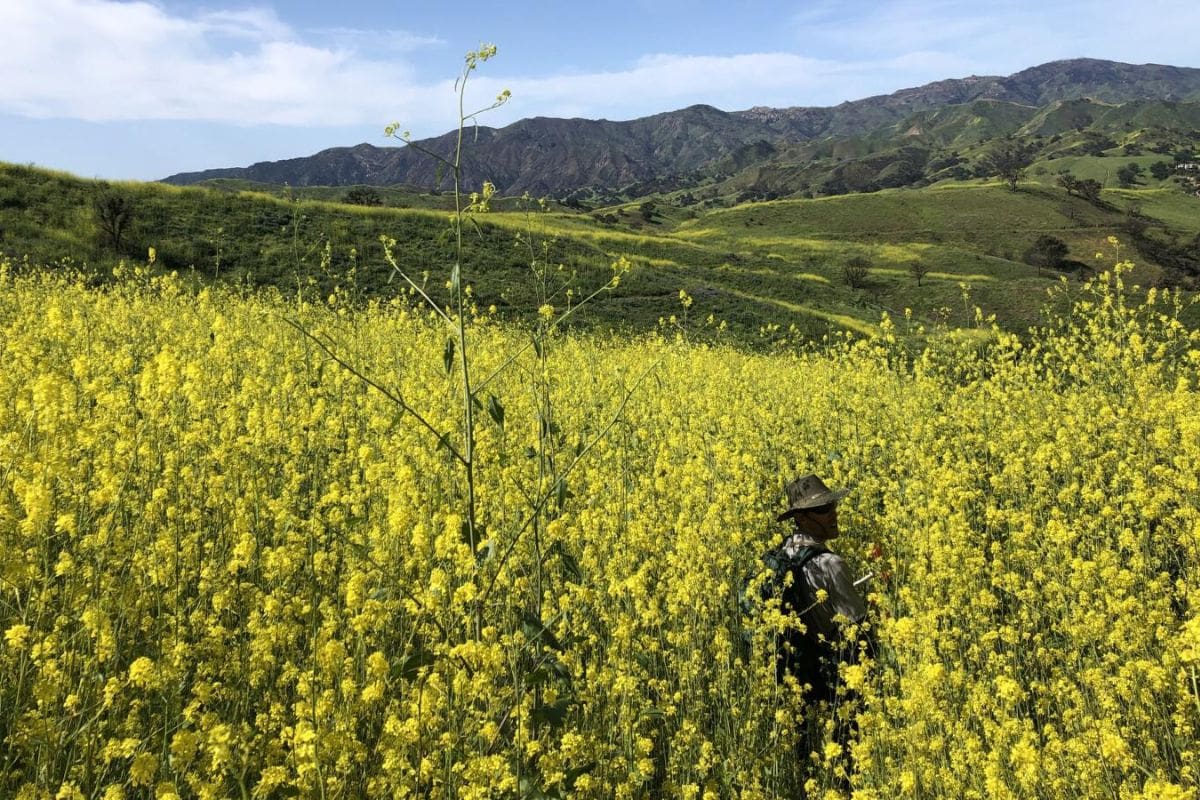California Mustard Menace: California’s mustard fields, once synonymous with ecological disruption, are undergoing a remarkable transformation. As the resilient yellow blooms spread across the state, a surprising culinary revolution is brewing.
From haute cuisine to sustainable agriculture, the piquant presence of mustard is reshaping palates and landscapes alike.
Stay tuned to discover how this botanical intruder is not just being managed but embraced, turning a crisis into an unexpected culinary triumph that might just change the way we view invasive species forever.

The Ecological Impact of Invasive Mustard
The proliferation of invasive mustard plants in California has sparked an ecological crisis with far-reaching consequences for the state’s native flora and wildfire risk.
These non-native plants, as highlighted by Naomi Fraga, director of conservation programs at the California Botanic Garden, exhibit aggressive behavior by outcompeting local species. Their rapid spread not only disrupts the delicate balance of the ecosystem but also contributes significantly to the heightened risk of wildfires in the region.
As temperatures increase, the dried mustard plants serve as highly flammable fuel, further complicating firefighting efforts and exacerbating California’s ongoing struggle with wildfires.
The invasive mustard’s ability to dominate landscapes poses a serious threat to the biodiversity of the state, necessitating urgent action to manage and control their spread.
Californians are faced with the challenging task of mitigating the ecological impact of these plants to safeguard the native flora and reduce the risk of devastating wildfires.
Despite the challenges presented by invasive mustard
Embracing innovative methods to combat the invasive mustard crisis, Californians are spearheading transformative approaches in managing and utilizing this ecological menace. Jason Wise, an outdoor environmental educator, advocates for foraging and consuming invasive species to aid in habitat restoration efforts. This unconventional approach not only helps control the spread of mustard but also promotes biodiversity by restoring native habitats.
By incorporating culinary and agricultural solutions, communities are turning the invasive mustard into a valuable resource. Megan Kathleen Bartlett, from the University of California, Davis, highlights the agricultural benefits of mustard, including its natural ability to deter nematodes and improve soil quality, particularly beneficial for vineyards.
These initiatives not only address the ecological challenges posed by invasive mustard but also demonstrate a shift towards viewing these plants as assets rather than solely as threats, paving the way for a more sustainable and harmonious coexistence with California’s natural environment.

Culinary and Economic Opportunities
In response to the ecological challenges posed by invasive mustard, California’s culinary and economic sectors are actively exploring the versatile potential of this plant, paving the way for innovative opportunities and sustainable practices.
Restaurants and wineries across the state are capitalizing on the mustard season, incorporating artisan mustards and recipes into their menus to showcase the plant’s adaptability and unique flavors. This culinary trend not only diversifies dining experiences but also supports local farmers who cultivate mustard for these establishments.
Additionally, the economic benefits extend to mustard-based products such as oils, sauces, and condiments, creating new market niches and revenue streams. Moreover, the sustainable practices associated with mustard cultivation, such as natural nematode deterrence and soil improvement, align with environmentally conscious consumer preferences, further enhancing the plant’s economic viability.
- Restaurants embracing mustard season with innovative dishes and tastings.
- Wineries incorporating mustard flavors into their products.
- Local farmers benefiting from cultivating mustard for culinary use.
- Creation of new market niches with mustard-based products.
- Sustainable practices like nematode deterrence and soil improvement enhancing economic opportunities.
Long-term Implications and Ecological Considerations
Exploring the long-term implications and ecological considerations surrounding California’s mustard management reveals a complex interplay between human innovation and environmental sustainability. The adaptive strategies implemented to combat invasive mustard not only showcase the resilience of communities facing ecological challenges but also highlight the potential of innovative thinking in transforming threats into economic and culinary opportunities. However, this narrative underscores the critical importance of sustained vigilance and adaptive management practices to safeguard native ecosystems amidst shifting environmental dynamics.
The shift from perceiving mustard as a menace to leveraging it as a culinary triumph signifies a paradigmatic evolution in ecological management approaches. While the economic benefits and culinary uses are undeniably significant, the long-term implications of these actions on the ecological balance of California’s native flora and fauna merit careful consideration. Balancing the exploitation of mustard for economic gains with the preservation of the delicate ecological equilibrium demands a nuanced approach that prioritizes sustainability and ecosystem health over short-term profits. In navigating this complex terrain, stakeholders must remain vigilant, adaptive, and committed to promoting environmental resilience for future generations.
Battle Against Invasive Mustard: A Story of Hope and Innovation
The ongoing battle against invasive mustard in California illuminates a narrative of resilience and ingenuity in the face of ecological challenges, highlighting the transformative power of innovative approaches in environmental stewardship. As communities adapt and explore new ways to address this issue, a story of hope emerges, demonstrating the potential for coexistence with and even benefit from ecological adversity.
- Community Collaboration: Local residents, environmental organizations, and government agencies join forces to combat invasive mustard through coordinated efforts.
- Research and Development: Scientists and researchers explore novel methods to control and manage invasive species, contributing valuable insights to the ongoing battle.
- Education and Awareness: Public outreach campaigns raise awareness about the impact of invasive mustard and empower individuals to take action in their communities.
- Economic Opportunities: Innovative uses for mustard plants create new economic prospects, turning a once-menacing species into a valuable resource.
- Sustainable Solutions: Emphasis on long-term sustainability drives the development of eco-friendly strategies that mitigate the spread of invasive mustard while preserving the ecosystem.

ALSO READ: Elon Musk X Nears Payment License Approval in New York and California
News in Brief
California’s Mustard Makeover: From Ecological Challenge to Culinary Triumph! Explore how the state is turning invasive mustard into a resource, revolutionizing landscapes and palates. Despite posing wildfire risks and threatening native flora, innovative Californians are foraging and incorporating mustard into cuisine. Culinary and economic sectors embrace the mustard season, showcasing its versatility. This unexpected culinary triumph offers hope and economic opportunities, challenging perceptions of invasive species. The battle against invasive mustard becomes a story of resilience, innovation, and coexistence, highlighting California’s commitment to environmental stewardship.
Our Reader’s Queries
Is mustard invasive to California?
Brought by Spanish colonizers, mustard stands as an invasive species in the Western landscape, its proliferation intricately tied to the evolution of land use, development, and environmental changes since California’s mission era.
Is California mustard edible?
Every stage of the wild mustard plant is edible, offering culinary potential throughout its growth. Each part can be prepared similarly to their cultivated counterparts. Like many wild spring greens, individuals often find the leaves more preferable in taste before the flower stalk emerges.
Where is mustard banned?
Mustard seeds are widely acknowledged as a valuable oil source. Nations in Asia such as India, Thailand, and Pakistan heavily depend on mustard oil for cooking and frying various dishes. In contrast, countries like the USA, Canada, and Europe have prohibited the consumption of this oil for human use.

